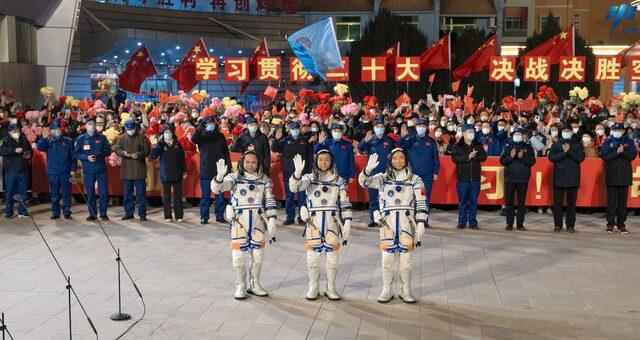In the statement made by the China Manned Space Program Agency (CMSA), it was reported that the Shincou-15 space shuttle, carrying the taikonauts Fey Cunlong, Ding Qingming and Cang Lu, docked with the core module of the space station.
A FIRST
Shincou-15 was launched yesterday from the Cichuen Launch Center in the Gobi Desert on the “Long March-2F Y15” carrier rocket.
The Taykonauts will hand over the mission in orbit for the first time with the three-person crew still on the station.
The taikonaut team, which will serve for 6 months at the Tiengong (Sky Palace) Space Station, will carry out the integration of two laboratory modules and their equipment.
Fey, 57, who took command of the expedition, joined the Shincou-6 mission, China’s second manned spaceflight, in 2005.
Taykonauts Ding and Cang take part in a manned space mission for the first time.

CHINA’S PLAN TO BUILD A SPACE STATION
China is working to establish its own space station, as the United States forbids cooperation in the field of space exploration and prevents its participation in the International Space Station (ISS) program.
Planned to consist of a core module, two laboratory modules and a space telescope, the Tiengong Station will be approximately the same size as Russia’s now defunct Mir Space Station when completed.
The main part of the station, the core module called “Tienhi” (celestial harmony), was launched on April 29, 2021, the first laboratory module “Vintien” (seeking the skies) on July 24, and the second laboratory module Mingtien (dreaming the heavens) on October 31.
With the addition of laboratory modules to the core module, the station’s “T” shaped frame was completed. After the main skeleton is built, the space telescope called “Shuntien” (traveling the skies) is planned to be added to the station as a separate module.
At the station, the assembly of which is planned to be completed by the end of 2022, a three-person taikonaut team rotates. (AA)
